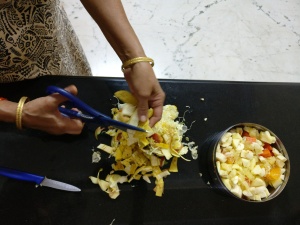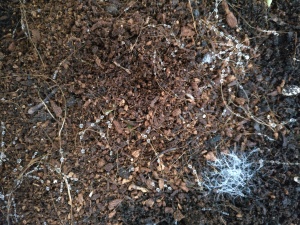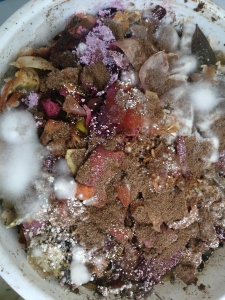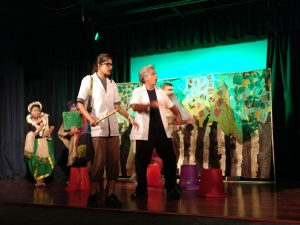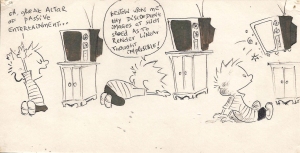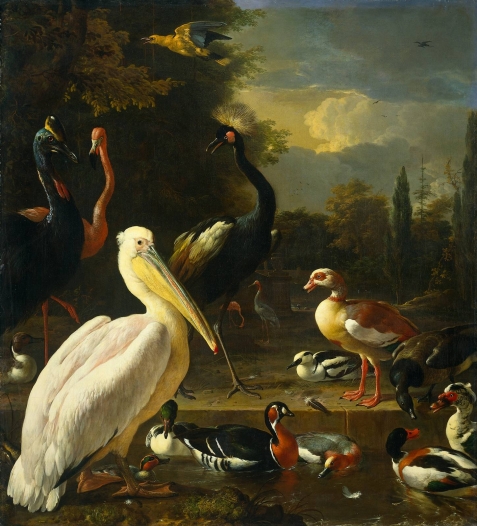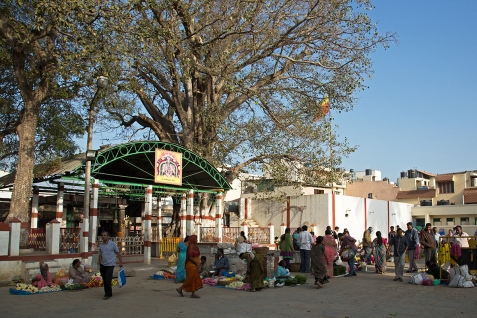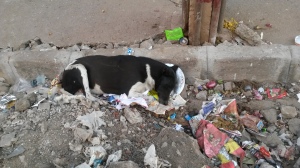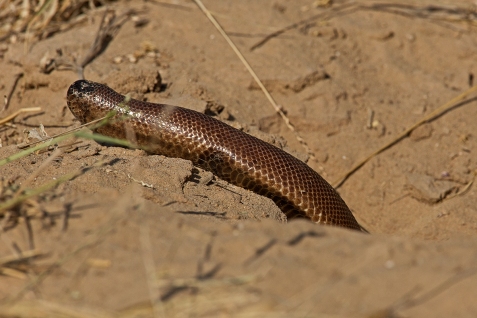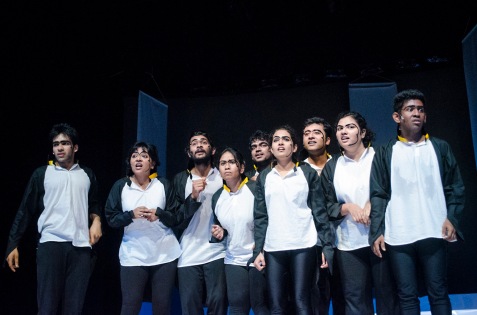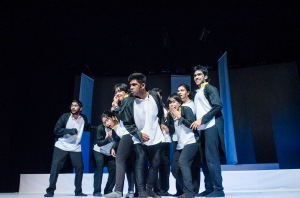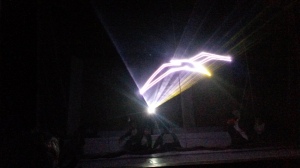This is a letter drafted by Mahesh Bhat, with inputs from me, Arati Kumar-Rao and Vageesha – requesting the hon. CM to avoid the Inter-Basin Transfer (IBT) and also drop the idea of the Hubballi-Ankola railway line.
I am requesting you, dear reader, for your support – please send a physical copy of this letter to the Hon. CM of Karnataka, once the lockdown is lifted and everyone is safe. Until then, THIS LETTER CAN BE EMAILED TO cm.kar@nic.in. You can choose between the English and Kannada versions.
*** Please copy the text into your email and send it to the above-mentioned address ***
English Version:
Shri B S Yeddiyurappa
Honourable Chief Minister
Government of Karnataka
Vidhana Soudha
Bengaluru – 560 001
Respected Sir,
We are writing to you regarding the proposal of “Inter Basin Transfer” (IBT) that will involve diversion of 484 tmcft (thousand million cubic feet) of water from various west-flowing rivers with the least impact on the environment to fill up nearly 36,000 tanks and lakes across Karnataka. And about the shocking news the State Wildlife Board has approved the Hubballi-Ankola Railway line that will be an environmental disaster.
Inter Basin Transfer:
IBT envisages getting the ‘excess water’ from various rivers – Kumaradhara, Netravati, Sharavati, Bedthi and Aghanashini. All these rivers originate in the Western Ghats and flow westwards towards Arabian sea. As you are already aware, the Western Ghats and the rainforests there are older than the Himlayas and are one of the global biodiversity hotspots.
Comprising only 6% of the world’s surface area, rainforests contain one-half to three-quarters of the earth’s species of plants and animals. This is in part because the groups of organisms which contain the most species (arthropods and flowering plants) are found in high concentrations in tropical forests. In fact, a land area of 0.5 km2 in some tropical forests contains more tree species than does the entire landmass of Europe and North America combined!
The Western Ghats also act as giant sponges, which absorb the rain water and slowly release them as natural springs. Protection of Western Ghats is imperative for securing our future! Already many ongoing projects have accounted for felling of over 20 lakh trees, already endangering this fragile ecosystem. Also the massive landslides that happened two years ago in Kodagu and Wayanad were results of indiscriminate deforestation.
Sir, IBT talks about bringing the ‘excess’ water from these rivers to ‘bayalu seeme’. However we would like to bring to your notice that the notion of ‘excess water’ is misleading. Any water in a river is used by various parts of the riparian ecosystem. The flow that reaches the sea carries both silt and water and is vital for maintaining the health of estuaries in the coastal areas.
Estuaries are important natural places. They provide goods and services that are economically and ecologically indispensable. Often called nurseries of the sea, estuaries provide vital nesting and feeding habitats for many aquatic plants and animals. Estuaries also help to maintain healthy ocean environments. They filter out sediments and pollutants from rivers and streams before they flow into the oceans, providing cleaner waters for marine life. Estuaries are also the economic centers of coastal communities.
Justice Radhakrishnan of the Supreme Court of India said this in a judgement of WRIT PETITION (C) NO. 202 OF 1995, T.N. Godavarman Thirumulpad vs Union Of India & Others said that
“Environmental justice could be achieved only if we drift away from the principle of anthropocentric to ecocentric. Many of our principles like sustainable development, polluter-pays principle, inter-generational equity have their roots in anthropocentric principles. Anthropocentrism is always human interest focussed and non-human has only instrumental value to humans. In other words, humans take precedence and human responsibilities to non-human based benefits to humans. Ecocentrism is nature centred where humans are part of nature and non-human has intrinsic value. In other words, human interest does not take automatic precedence and humans have obligations to non- humans independently of human interest. Ecocentrism is therefore life-centred, nature-centred where nature includes both human and non-humans. National Wildlife Action Plan 2002-2012 and centrally sponsored scheme (Integrated Development of Wildlife Habitats) is centred on the principle of ecocentrism.
Our honourable President Shri Ramanath Kovind has said in an essay that was published in Hindustan Times on March 20, 2020 “Respect for nature may be the next lesson intended for us. Homo sapiens is the only organism that has overpowered all other animals, taken control of the whole planet, and even set foot on the moon. Now it stands humbled by a microorganism. We would do well to keep in mind the fact that at the end of the day we are merely biological organisms, dependent on other organisms for survival. Humankind’s craving to control nature and exploit all its resources for profit can be wiped out in a stroke by an organism we cannot even see with the naked eye.”
Sir, it is important to understand that our home – earth and the natural resources are not just for the use of human beings but also of the many millions of other species. Nomadic shepherds of the Deccan consider the wolf as their brother and say that the wolf too has a share in their flock. Taking a leaf from their book, we also need to make sure that we share our natural resources with other beings, whose survival is of vital importance for our survival.
While you have the worthwhile goal of oorige ondu kere – It would be worth considering – oorige ondu kere – aa kereyalli maLey neeru! Madakas, the traditional watershed rainwater harvesting structures can be considered to meet the drinking water needs and that of agriculture in bayalu seeme. Many local interventions have already been successfully carried out. Experts who are working in this area can be tapped to meet the water needs of the people without destroying vast swathes of Western Ghats.
Research suggests that outbreaks of animal-borne and other infectious diseases such as Ebola, Sars, bird flu and now Covid-19, caused by a novel coronavirus, are on the rise. Pathogens are crossing from animals to humans, and many are able to spread quickly to new places. The US Centers for Disease Control and Prevention (CDC) estimates that three-quarters of new or emerging diseases that infect humans originate in animals. “We invade tropical forests and other wild landscapes, which harbour so many species of animals and plants – and within those creatures, so many unknown viruses,” David Quammen, author of Spillover: Animal Infections and the Next Pandemic, recently wrote in the New York Times. “We cut the trees; we kill the animals or cage them and send them to markets. We disrupt ecosystems, and we shake viruses loose from their natural hosts. When that happens, they need a new host. Often, we are it.” Hence preserving the Western Ghats is imperative to prevent outbreaks of such dreaded diseases. If we do not preserve the biodiversity of our Western Ghats, the next epicenter of a contagion could well be Karnataka. We already have the example of Kyasanur Forest Disease in Karnataka.
Life will march on. It might not include tigers and elephants and turtles and gorillas and towering forests. And it might not even include us. It might just be cockroaches and tardigrades and bacteria and viruses. But life will march on. We can choose to continue to curate and preserve what we find precious about the current diversity, including ourselves, by pulling back on our self-destructive consumption and waste. Or we can choose that does not include us and the beauty we love.
Diverting the west flowing rivers will directly impact the Western Ghats which will, in turn, impact all the east flowing rivers. We request you to take the correct decision in saving our rivers and the Western Ghats.
Hubli Ankola railway line :
The project entails felling nearly 2 lakh trees to lay a 164.44-km length railway line whose benefits are questionable according to various studies , especially with respect to transferring ore from mines in Ballari to coast.
According to the CEC report the ore available in Ballari-Hosapete’s mines is only for two decades after which mining would be economically unviable. Distance between Hospet-Hubli-Vasco is 230 km and distance between Hospet-Hubli-Ankola(the proposed route) would be 212 km which are almost the same. Why not take that route instead of fragmenting forests by building over 50 major bridges and over 21 kms of tunnels through the evergreen forests?
The line diverts 1472 acres of pristine forests and introduces fragmentation to two tiger reserves , Bedthi Conservation Reserve and Anshi Dandeli Hornbill reserve. These forests through which the railway line cuts support 29 species of mammals, 256 species of birds, many more species of reptiles and butterflies. Majority of the mammals are in the IUCN red list and also protected under the Wildlife Conservation Act 1972.
The tracks between Kali Tiger Reserve and Bedthi Conservation Reserve and more than 80% of the line cuts through Western Ghats.
It was also identified that elephants moving out of Dandeli Sanctuary pass through Bhagwati, Kalghatgi, Kirwatti, Mundgod, Katur and go up to Hangal. The proposed rail line would pass through the region and fragment the corridor and pose a threat of train hits and loss of property and lives of humans and livestock. Hence We request you not to go ahead with the Hubballi- Ankola railway line as well. No amount of afforestation will compensate for the loss of rainforests.
We would like you to go down in history as the CM who saved Western Ghats rather than the CM who destroyed it. Please save the Western Ghats for the sake of us and the future generations.
Yours Sincerely,
—————-
Kannada Version (translated by L C Nagaraj):
ಜಲಾನಯನ ವರ್ಗಾವಣೆ, ಹುಬ್ಬಳ್ಳಿ-ಅಂಕೋಲ ರೈಲು ಮಾರ್ಗಗಳು ಬೇಡ, ಪಶ್ಚಿಮ ಘಟ್ಟಗಳನ್ನು ದಯವಿಟ್ಟು ಉಳಿಸಿ
ಶ್ರೀ ಯಡಿಯೂರಪ್ಪ
ಮಾನ್ಯ ಮುಖ್ಯ ಮಂತ್ರಿಗಳು
ಕರ್ನಾಟಕ ಸರ್ಕಾರ
ವಿಧಾನ ಸೌಧ
ಬೆಂಗಳೂರು
ಮಾನ್ಯ ಮುಖ್ಯ ಮಂತ್ರಿಗಳಿಗೆ ಆದರಣೀಯ ನಮಸ್ಕಾರಗಳು ,
ಪಶ್ಚಿಮಕ್ಕೆ ಹರಿಯುವ ವಿವಿಧ ನದಿಗಳಿಂದ 484 ಟಿ.ಎಂ.ಸಿ [ ಸಾವಿರ ಮಿಲಿಯನ್ ಘನ ಅಡಿ ] ನೀರನ್ನ ಕಡಿಮೆಪ್ರಮಾಣದ ವಿನಾಶ ಮಾಡಿ ಕರ್ನಾಟಕದಾದ್ಯಂತ ಇರುವ 36000 ಕೆರೆಗಳಿಗೆ ತುಂಬಿಸಲು ಕೈಗೊಳ್ಳಲಾಗುತ್ತಿರುವ ಅಂತರ ಜಲಾನಯನ ವರ್ಗಾವಣೆ [ Interbasin transfer / IBT ] ವಿಷಯದಲ್ಲಿ ನಾವು ನಿಮಗೆ ಬರೆಯುತ್ತಿದ್ದೇವೆ. ಈ ಪ್ರಸ್ತಾಪಕ್ಕೆ ಸಂಬಂಧಿಸಿದಂತೆ ರಾಜ್ಯ ವನ್ಯ ಜೀವಿ ಮಂಡಳಿ ಹುಬ್ಬಳ್ಳಿ ,- ಅಂಕೋಲ ರೈಲು ಮಾರ್ಗ ನಿರ್ಮಾಣಕ್ಕೆ ಅನುಮೋದನೆ ಕೊಟ್ಟಿರುವುದು ಅಗಾಧ ಪರಿಸರ ವಿಪತ್ತನ್ನ ತಂದೊಡ್ಡಲಿದೆ.
ಕುಮಾರಧಾರ, ನೇತ್ರಾವತಿ, ಶರಾವತಿ, ಬೇಡ್ತಿ ಮತ್ತು ಅಘನಾಶಿನಿ ಈ ವಿವಿಧ ನದಿಗಳಿಂದ ಹೆಚ್ಚುವರಿ ನೀರು ಪಡೆಯುವುದನ್ನು ಯೋಜಿಸಲಾಗಿದೆ. ಈ ಎಲ್ಲ ನದಿಗಳೂ ಪಶ್ಚಿಮ ಘಟ್ಟದಲ್ಲಿ ಹುಟ್ಟಿ ಪಶ್ಚಿಮದ ಅರೇಬಿಯನ್ ಸಮುದ್ರಕ್ಕೆ ಹರಿಯುತ್ತಿವೆ. ನಿಮಗೆ ಈಗಾಗಲೇ ತಿಳಿದಿರುವಂತೆ ಪಶ್ಚಿಮ ಘಟ್ಟಗಳು ಮತ್ತು ಇಲ್ಲಿನ ಮಳೆಕಾಡುಗಳು ಹಿಮಾಲಯದ ಕಾಡುಗಳಿಗಿಂತ ಪ್ರಾಚೀನವಾದ ಜೀವ ವೈವಿಧ್ಯತೆಯ ತಾಣಗಳು. ವಿಶ್ವದ ಮೇಲ್ಮೈ ವಿಸ್ತೀರ್ಣದಲ್ಲಿ ಶೇ 6 ರಷ್ಟು ಭಾಗವನ್ನು ಹೊಂದಿರುವ ಮಳೆಕಾಡುಗಳು ಭೂಮಿಯ ಮೇಲಿನ ಸಸ್ಯ ಪ್ರಭೇಧದ ಅರ್ಧಭಾಗ ಮತ್ತು ಪ್ರಾಣಿವರ್ಗದ ಮುಕ್ಕಾಲು ಭಾಗವನ್ನು ಒಳಹೊಂಡಿವೆ. ಹೆಚ್ಚಿನ ಪ್ರಭೇಧಗಳನ್ನು ಹೊಂದಿರುವ ಜೀವಗುಂಪುಗಳ ಹೆಚ್ಚಿನ ಸಾಂದ್ರತೆ ಕಂಡುಬರುವುದು ಉಷ್ಣವಲಯದ ಕಾಡುಗಳಲ್ಲಿ. ವಾಸ್ತವಿಕವಾಗಿ ಸಮಸ್ತ ಯೂರೋಪು ಮತ್ತು ಉತ್ತರ ಅಮೇರಿಕದ ಭೂದ್ರವ್ಯದಲ್ಲಿರುವ ಒಟ್ಟು ಸಸ್ಯ ಪ್ರಭೇಧಗಳು ಉಷ್ಣವಲಯದ ಕಾಡುಗಳ 0.5 ಚದರ ಕಿಲೋಮೀಟರು ಪ್ರದೇಶದಲ್ಲೇ ಕಂಡು ಬರುತ್ತವೆ.
ಪಶ್ಚಿಮ ಘಟ್ಟದ ಕಾಡುಗಳು ಮಳೆನೀರನ್ನು ಹಿಡಿದಿಟ್ಟುಕೊಂಡು ನಿಧಾನವಾಗಿ ಜಲದ ಒರತೆಗಳನ್ನು ಉಕ್ಕಿಸುವ ಜಲದ ಮಡು. ನಮ್ಮ ಮುಂದಿನ ಸುರಕ್ಷತೆ ದೃಷ್ಠಿಯಿಂದ ಪಶ್ಚಿಮ ಘಟ್ಟದ ಕಾಡುಗಳು ಮಹತ್ವವಾದವು. ಪಶ್ಚಿಮ ಘಟ್ಟದಲ್ಲಿ ಈಗಾಗಲೇ ಚಾಲ್ತಿಯಲ್ಲಿರುವ ವಿವಿಧ ಕಾಮಗಾರಿಗಳಿಗಾಗಿ 20 ಲಕ್ಷ ಮರಗಳನ್ನು ಕೆಡವಲಾಗಿದ್ದು ಇಲ್ಲಿನ ಸೂಕ್ಷ್ಮ ಪರಿಸರ ವ್ಯವಸ್ಥೆಗೆ ಧಕ್ಕೆಯಾಗಿದೆ. ಎರಡು ವರ್ಷದ ಹಿಂದೆ ಕೊಡಗು ಮತ್ತು ಕಾವೇರಿ ಕೊಳ್ಳದಲ್ಲಿ, ವಯನಾಡಿನಲ್ಲಿ ಉಂಟಾದ ಭೂಕುಸಿತ ವಿಪರೀತ ಪ್ರಮಾಣದ ಅರಣ್ಯನಾಶದಿಂದಲೇ ಸಂಭವಿಸಿವೆ
ಸರ್, ಈ ಯೋಜನೆಯಲ್ಲಿ ” ಹೆಚ್ಚುವರಿ ನೀರನ್ನು ಬಯಲುಸೀಮೆಗೆ ಹರಿಸುವ ” ಪ್ರಸ್ತಾಪವಿದೆ , ಆದರೆ ಈ ” ಹೆಚ್ಚುವರಿ ನೀರು ” ಎಂಬ ಪರಿಕಲ್ಪನೆಯೇ ದಾರಿ ತಪ್ಪಿಸುವಂಥದು . ನದಿಪಾತ್ರ ವಿವಿಧ ಭಾಗಗಳಲ್ಲಿನ ನೀರು ಆ ನದಿಯ ಜಲಾನಯನ ಪರಿಸರ ವ್ಯವಸ್ಥೆಯ ಅಗತ್ಯಗಳಿಗೆ ಬಳಕೆಯಾಗುತ್ತಿರುತ್ತದೆ. ಹರಿದು ಸಮುದ್ರ ಸೇರುವ ನದಿ ತನ್ನ ಜೊತೆಗೆ ಸಾಗಿಸುವ ಸಾವಯವ ಉಳಿಕೆ ಕರಾವಳಿ ಪ್ರದೇಶದ ಜೈವಿಕ ತಾಣಗಳ ರಕ್ಷಣೆಗೆ ಅಗತ್ಯವಾದುದು. ಈ ಜೀವ ವೈವಿಧ್ಯ ತಾಣಗಳು ಆರ್ಥಿಕ ಮತ್ತು ಪರಿಸರಾತ್ಮಕ ಮೌಲ್ಯವುಳ್ಳ ಸರಕು ಸೇವೆಗಳನ್ನ ಒದಗಿಸುತ್ತಿದ್ದು ಇವುಗಳು ಕಡಲಿನ ಪೋಷ್ಟಕ ವ್ಯವಸ್ಥೆಯನ್ನು ಕಾಯುತ್ತಿವೆ. ಅನೇಕ ಸಸ್ಯ ಮತ್ತು ಪ್ರಾಣಿಗಳಿಗೆ ಆಹಾರ ಮತ್ತು ಆಸರೆ ಅವಕಾಶ ಒದಗಿಸಿದ್ದು ಸಮುದ್ರ ಪರಿಸರ ವ್ಯವಸ್ಥೆಯನ್ನು ರಕ್ಷಿಸಿಕೊಳ್ಳಲು ನೆರವಾಗುತ್ತಿವೆ. ಈ ಜೀವ ವೈವಿಧ್ಯ ತಾಣಗಳು ಕರಾವಳಿ ಪ್ರದೇಶದ ಜನಸಮುದಾಯಗಳಿಗೂ ಬದುಕಿನ ಆಸರೆ ಒದಗಿಸುತ್ತಿವೆ.
ಟಿ.ಎಸ್. ಗೋದಾವರ್ಮನ್ ತಿರುಮಲಪಾದ್ V/s ಭಾರತ ಒಕ್ಕೂಟ ಸರ್ಕಾರ ಮೊಕದ್ದಮೆ [ Writ petition ( C ) No 202 of 1995 ] ಯಲ್ಲಿ ಭಾರತ ಸುಪ್ರೀಂ ಕೋರ್ಟಿನ ನ್ಯಾಯಮೂರ್ತಿ ಅವರು ಹೀಗೆ ಅಭಿಪ್ರಾಯಪಟ್ಟಿದ್ದಾರೆ :
‘ ಮಾನವ ಕೇಂದ್ರಿತ ತಾತ್ವಿಕತೆ ಮತ್ತು ಲೋಕಗ್ರಹಿಕೆಗಳಿಂದ ದೂರ ಸರಿದು ಪರಿಸರ ಕೇಂದ್ರಿತವಾದ ಪಾಲನೆಯ ತಾತ್ವಿಕತೆಗೆ ಒಲವು ತೋರಿದಾಗ ಮಾತ್ರ ನಾವು ಪರಿಸರಾತ್ಮಕ ನ್ಯಾಯವನ್ನು ಸಾಧಿಸಬಹುದು. ಸುಸ್ಥಿರ ಅಭಿವೃದ್ಧಿ , ಮಾಲಿನ್ಯಕಾರನು ತಾನು ಉಂಟು ಮಾಡಿದ ಮಾಲಿನ್ಯಕ್ಕೆ ಪ್ರತಿಯಾಗಿ ದಂಡ ತೆರುವುದು ಮತ್ತು ಅಂತರ ತಲೆಮಾರು ಸಮತೆ ಈ ಎಲ್ಲವೂ ಮಾನವಕೇಂದ್ರಿತ ತತ್ವಗಳಿಂದಲೇ ಹುಟ್ಟಿಕೊಂಡ ತಪ್ಪು ಪರಿಕಲ್ಪನೆಗಳು. ಮಾನವಕೇಂದ್ರಿತ ತಾತ್ವಿಕತೆ ಮತ್ತು ಲೋಕಗ್ರಹಿಕೆಗಳು ಮನುಷ್ಯರ ಐಹಿಕ ಆಸಕ್ತಿಗಳ ಬಗ್ಗೆ ನಿಗಾ ವಹಿಸುತ್ತವೆಯೇ ಹೊರತು ಮಾನುಷವಲ್ಲದ ಜೀವಮಂಡಲವನ್ನು ಬಳಸಿ ಬಿಸಾಡಬಹುದಾದ ಸಾದನಗಳನ್ನಾಗಿ ಸಂಕುಚಿತ ದೃಷ್ಠಿಯಿಂದ ಕಾಣುತ್ತದೆ. ಮಾನವರು ಮಾನವರಿಗಲ್ಲದ ಉಪಯೋಗಗಳ ಬಗ್ಗೆ ಅಷ್ಟಾಗಿ ಚಿಂತಿಸುವವರಲ್ಲ. ಪರಿಸರ ಕೇಂದ್ರಿತ ಪ್ರಜ್ಞೆ ಮತ್ತು ಲೋಕಗ್ರಹಿಕೆಯು ನಿಸರ್ಗದ ಸರ್ವಜೀವ ಕೇಂದ್ರಿತವಾಗಿದ್ದು ಮನುಷ್ಯರು ಅದರ ಒಂದು ಭಾಗವಾಗಿರುತ್ತಾರೆ ಮತ್ತು ಮಾನುಷವಲ್ಲದ ನಿಸರ್ಗದ ಚರಾಚರಗಳಿಗೆ ಅಂತರ್ಗತ ಮೌಲ್ಯವಿರುತ್ತದೆ. ಇಂತಹ ನಿಸರ್ಗ ಕೇಂದ್ರಿತ ಪ್ರಜ್ಞೆ ಮತ್ತು ಲೋಕಗ್ರಹಿಕೆಯಲ್ಲಿ ಮನುಷ್ಯರು ನಿಸರ್ಗದ ಚರಾಚರಗಳ ಮೇಲೆ ಪ್ರಾಬಲ್ಯ ಸಾಧಿಸದೇ ಅವುಗಳ ಅಸ್ತಿತ್ವದ ಬಗ್ಗೆ ಕಾಳಜಿ ಮತ್ತು ಅನುಭೂತಿ ಹೊಂದಿದವರಾಗಿರುತ್ತಾರೆ. ಆದ್ದರಿಂದ ನಿಸರ್ಗ ಕೇಂದ್ರಿತ ಲೋಕಗ್ರಹಿಕೆಯು ಸರ್ವಜೀವಗಳ ಹಿತವನ್ನು ಒಳಗೊಳ್ಳುವ ಜೀವಕೇಂದ್ರಿತ ಪ್ರಜ್ಞೆ ; ನಿಸರ್ಗವು ಮಾನುಷವಾದುದು ಮತ್ತು ಮಾನುಷೇತರವಾದುದನ್ನೂ ಏಕಕಾಲಕ್ಕೆ ಒಳಗೊಳ್ಳುವ ಜೀವಮಂಡಲ ಪ್ರಜ್ಞೆ. 2002 -12 ರ ರಾಷ್ಟ್ರೀಯ ವನ್ಯಮೃಗ ಕ್ರಿಯಾ ಯೋಜನೆ [ National wildlife action plan ] ಮತ್ತು ಕೇಂದ್ರ ಸಹಯೋಗದ ಸಮಗ್ರ ವನ್ಯಮೃಗ ತಾಣ ಅಭಿವೃದ್ಧಿ ಯೋಜನೆಗಳು ನಿಸರ್ಗ ಕೇಂದ್ರಿತ ತಾತ್ವಿಕತೆಗಳನ್ನ ಆಧರಿಸಿವೆ.
ನಮ್ಮ ಗೌರವಾನ್ವಿತ ರಾಷ್ಟ್ರಾಧ್ಯಕ್ಷರಾದ ಶ್ರೀ ರಾಮನಾಥ್ ಕೋವಿಂದ್ ಅವರು 2020 ಮಾರ್ಚ್ 20 ರಂದು ಹಿಂದುಸ್ತಾನ್ ಟೈಮ್ಸ್ ಪತ್ರಿಕೆಯಲ್ಲಿ ಬರೆದಿರುವ ಲೇಖನದಲ್ಲಿ ಹೀಗೆ ಅಭಿಪ್ರಾಯಪಟ್ಟಿದ್ದಾರೆ :
‘ ಈಗ ನಮಗೆ ಉಳಿದಿರುವ ಏಕೈಕ ಆಯ್ಕೆ ನಿಸರ್ಗವನ್ನ ಅದರ ಎಲ್ಲ ಜೀವರೂಪಗಳೊಂದಿಗೆ ಗೌರವಿಸುವುದು , ಭೂಮಿಯ ಜೀವಮಂಡಲದ ಉಳಿದೆಲ್ಲ ಜೀವರೂಪಗಳ ಮೇಲೆ ಪ್ರಾಬಲ್ಯ ಸಾಧಿಸಿ ಚಂದ್ರಲೋಕದ ಮೇಲೂ ಕಾಲಿಟ್ಟ ಜೀವ ಎಂದರೆ ಮನುಷ್ಯನೊಬ್ಬನೇ . ಆದರೆ ಈಗ ಕಣ್ಣಿಗೆ ಕಾಣದ ಒಂದು ಸೂಕ್ಷ್ಮಾಣುವಿನ ಎದುರು ದೈನೇಸಿಯಾಗಿ ನಿಲ್ಲಬೇಕಾಗಿ ಬಂದಿದೆ. ಈಗ ನಾವು ಅರಿತುಕೊಳ್ಳಬೇಕಿದೆ ಮಾನುಷಜೀವವು ಉಳಿದೆಲ್ಲ ಜೀವರೂಪಗಳನ್ನ ಅವಲಂಬಿಸಿರುವ ಮತ್ತೊಂದು ಜೀವರೂಪ ಅಷ್ಟೇ. ಭೂಮಿಯ ಸಕಲ ಸಂಪನ್ಮೂಲಗಳನ್ನು ತನ್ನೊಬ್ಬನ ಹಿತಕ್ಕಾಗಿ ಮಾತ್ರ ಕೊಳ್ಳೆ ಹೊಡೆಯಲು ತಹತಹಿಸುತ್ತಿರುವ ಮನುಷ್ಯ ಕುಲ ಒಂದೇ ಒಂದು ಸೂಕ್ಷ್ಮಾಣು ಜೀವಿಯಿಂದ ನಾಶವಾಗಬಲ್ಲುದು ‘
ಸರ್, ಈ ಕವಲುದಾರಿಯಲ್ಲಿ ನಿಂತಿರುವ ನಾವು ನಮ್ಮ ಮನೆಯಾಗಿರುವ ಈ ಭೂಮಿ ಮತ್ತು ಅದರ ಮೇಲಿನ ಜೀವರೂಪಗಳು ಮನುಷ್ಯರ ಬಳಕೆಗಾಗಿ ಮಾತ್ರವಲ್ಲ ಉಳಿದ ಎಲ್ಲ ಜೀವಗಳಿಗೂ ಇಲ್ಲಿ ಬದುಕುವ ಅವಕಾಶವಿರಬೇಕು . ದಖ್ಖನಿ ಪ್ರದೇಶದ ಕುರಿಗಾಹಿಗಳು ತೋಳವನ್ನ ತಮ್ಮ ಒಡಹುಟ್ಟಿದವನೆಂದೇ ಭಾವಿಸಿ ತಾವು ಸಾಕಿದ ಕುರಿಗಳಲ್ಲಿ ಅದಕ್ಕೂ ಪಾಲು ಕೊಡುವ ನಡವಳಿಕೆಯಿದೆ. ಅವರ ಅರಿವಿನ ಒಂದು ಎಳೆಯನ್ನಾದರೂ ಅನುಸರಿಸಿ ನಾವು ನಮ್ಮ ನೈಸರ್ಗಿಕ ಸಂಪನ್ಮೂಲಗಳಲ್ಲಿ , ನಮ್ಮ ಉಳಿವಿಗೆ ಆಧಾರವಾಗಿರುವ ಉಳಿದೆಲ್ಲ ಜೀವರೂಪಗಳಿಗೂ ಹಕ್ಕಿದೆ ಎಂಬ ಹೊಸ ನಿಸರ್ಗಕೇಂದ್ರಿತ ಅರಿವನ್ನ ನಾವೀಗ ಕಂಡುಕೊಳ್ಳುವ ಅಗತ್ಯ ಉಂಟಾಗಿದೆ.
ಸರ್, ತಾವು ‘ ಊರಿಗೆ ಒಂದು ಕೆರೆ ‘ ಎಂಬ ಮೌಲಿಕ ಯೋಜನೆಯನ್ನು ಮುಂಗಾಣ್ಕೆಯಾಗಿ ಕಂಡಿರುವುದು ಸರಿಯಷ್ಟೇ , ಆದ್ದರಿಂದ ಊರಿಗೊಂದು ಕೆರೆ , ಕೆರೆಗೆ ಮಳೆನೀರು , ಮಳೆ ಸುರಿಯಲು ಅಗತ್ಯವಿರುವ ಜಲವಲಯಗಳು ಎಂದರೆ ಬೆಟ್ಟಸಾಲುಗಳ ರಕ್ಷಣೆ ಮತ್ತು ಅರಣ್ಯೀಕರಣ , ಪಾರಂಪರಿಕ ಜಲಾನಯನ ರಚನೆಗಳಾದ ಮಡಕ, ತಲಪರಿಗೆ , ದೊಣೆ ಇವುಗಳಿಂದ ಮತ್ತು ಭೂಮಿಯ ಜಲಾನಯನ ಪ್ರದೇಶಗಳ ಸೂಕ್ತ ಉಪಚಾರದಿಂದ ಬಯಲುಸೀಮೆಯ ನೀರಿನ ಅಗತ್ಯಗಳನ್ನ ಸಮರ್ಥವಾಗಿ ನೀಗಿಸಬಹುದಾಗಿದೆ. ಈ ವಿಷಯದಲ್ಲಿ ಅನೇಕ ಯಶೋಗಾತೆಗಳು ನಮ್ಮ ಕಣ್ಣ ಮುಂದಿವೆ. ಈಗಾಗಲೇ ಜಲಸಂರಕ್ಷಣೆ ಕ್ಷೇತ್ರದಲ್ಲಿ ಕಾರ್ಯನಿರ್ವಹಿಸಿ ಪಶ್ಚಿಮ ಘಟ್ಟ ಶ್ರೇಣಿಗಳು ಯಾವುದೇ ಕಾರಣದಿಂದಲೂ ಮುಕ್ಕಾಗದಂತೆ ಬಯಲುಸೀಮೆಯ ನೀರಿನ ಅಗತ್ಯಗಳನ್ನ ಪೂರೈಸಬಹುದಾಗಿದೆ.
ಪ್ರಾಣಿ , ಮೃಗಜನ್ಯ ರೋಗ , ಸಾಂಕ್ರಾಮಿಕ ರೋಗಗಳಾದ ಎಬೋಲ, ಸಾರ್ಸ್, ಹಕ್ಕಿಜ್ವರ ಮತ್ತು ಈಗ ಕರೋನ ವೈರಸುಗಳು ದಿನೇ ದಿನೇ ಹೆಚ್ಚಳವಾಗುತ್ತಿರುವುದನ್ನು ಸಂಶೋದನೆಗಳು ತಿಳಿಸುತ್ತ ಬಂದಿವೆ. ರೋಗ ಹರಡುವ ಅನೇಕ ಸೂಕ್ಷ್ಮಾಣುಜೀವಿಗಳು ಪ್ರಾಣಿಗಳಿಂದ ಮನುಷ್ಯರಿಗೆ ಹರಡಿಕೊಳ್ಳುತ್ತಿವೆ , ಇವುಗಳ ಪೈಕಿ ಹಲವು ಇತರ ಸ್ಥಳಗಳಿಗೂ ಹರಡಿಕೊಳ್ಳುತ್ತಿವೆ. ಅಮೇರಿಕದ ರೋಗ ನಿಯಂತ್ರಣ ಮತ್ತು ಹತೋಟಿ ಕೇಂದ್ರ [ Centre for Disease Control and Prevention / CDC ] ಅಂದಾಜು ಮಾಡಿರುವ ಪ್ತಕಾರ ಮನುಷ್ಯರಿಗೆ ಸೋಂಕುತ್ತಿರುವ 3/4 ರಷ್ಟು ರೋಗಗಳು ಪ್ರಾಣಿ ಮತ್ತು ವನ್ಯಮೃಗಗಳಿಂದ ಉಂಟಾಗುತ್ತಿವೆ. ವಿವಿಧ ಸಸ್ಯಗಳು ಮತ್ತು ಪ್ರಾಣಿಗಳಿಗೆ ಆಸರೆ ತಾಣವಾಗಿರುವ ಉಷ್ಣವಲಯದ ಮಳೆಕಾಡುಗಳ ಮೇಲೆ ನಾವು ಧಾಳಿ ಮಾಡಿದಾಗ ಗೊತ್ತಿಲ್ಲದ ವೈರಸುಗಳು ವಾತಾವರಣಕ್ಕೆ ಚೆಲ್ಲಿಕೊಳ್ಳುತ್ತವೆ . ‘ Spill Over ‘ ಪುಸ್ತಕದ ಲೇಖಕ ಡೇವಿಡ್ ಕ್ಸಾಮೆನ್ ನ್ಯೂಯಾರ್ಕ್ ಟೈಮ್ಸ್ ಪತ್ರಿಕೆಯಲ್ಲಿ ಬರೆದ ಲೇಖನದಲ್ಲಿ ಅಭಿಪ್ರಾಯಪಟ್ಟಿರುವಂತೆ ನಾವು ಮರಗಳನ್ನ ಕಡಿದು , ಪ್ರಾಣಿಗಳನ್ನ ಕೊಲ್ಲುವ ಮೂಲಕ ವೈರಸುಗಳ ಮೂಲತಾಣವನ್ನು ಅಲುಗಾಡಿಸಿಬಿಟ್ಟಿದ್ದೇವೆ . ತಮ್ಮ ಮೂಲ ನೆಲೆಗಳನ್ನು ಕಳೆದುಕೊಂಡ ವೈರಸುಗಳು ಆಸರೆ ಹುಡುಕುತ್ತ ಬಂದಾಗ, ಆ ಆಸರೆ ಮನುಷ್ಯರಾದ ನಾವೇ ಆಗಿರುವುದು ಈಗ ನಮ್ಮ ಕಣ್ಣ ಮುಂದೆ ಸಂಭವಿಸುತ್ತಿದೆ. ಈ ದೃಷ್ಟಿಯಿಂದ ಪಶ್ಚಿಮ ಘಟ್ಟ ಶ್ರೇಣಿಗಳ ಜೀವ ವೈವಿಧ್ಯತೆಯನ್ನು ಈಗ ಹೇಗಿದೆಯೊ ಹಾಗೇ ಸಂರಕ್ಷಿಸಿಕೊಳ್ಳುವುದು ಇಂತಹ ಘಾತುಕ ವೈರಸುಗಳನ್ನು ತಡೆಯಲು ಇರುವ ಮುಖ್ಯ ವಿಧಾನ . ಈಗ ನಾವು ಪಶ್ಚಿಮ ಘಟ್ಟ ಸಾಲುಗಳ ಜೀವ ವೈವಿಧ್ಯತೆಯನ್ನು ಸಂರಕ್ಷಿಸಿಕೊಳ್ಳದಿದ್ದರೆ ಮುಂದಿನ ಕರ್ನಾಟಕವೇ ವೈರಸು ಸ್ಫೋಟ ಕೇಂದ್ರವಾಗಲಿದೆ.
ಪಶ್ಚಿಮಕ್ಕೆ ಹರಿಯುವ ನದಿಗಳನ್ನು ತಿರುಗಿಸುವುದು ಪಶ್ಚಿಮಘಟ್ಟಗಳ ಮೇಲೆ ನೇರವಾಗಿ ಪರಿಣಾಮ ಬೀರುತ್ತದೆ. ಇದು ಪೂರ್ವಕ್ಕೆ ಹರಿಯುವ ಎಲ್ಲ ನದಿಗಳ ಮೇಲೂ ವ್ಯತಿರಿಕ್ತ ಪರಿಣಾಮ ಬೀರುತ್ತದೆ. ನಮ್ಮ ನದಿಗಳು ಮತ್ತು ಪಶ್ಚಿಮ ಘಟ್ಟಗಳನ್ನು ಉಳಿಸಿಕೊಳ್ಳುವಲ್ಲಿ ಸರಿಯಾದ ನಿರ್ಧಾರ ತೆಗೆದುಕೊಳ್ಳುವಂತೆ ನಾವು ನಿಮ್ಮಲ್ಲಿ ವಿನಂತಿಸಿಕೊಳ್ಳುತ್ತಿದ್ದೇವೆ . ಹುಬ್ಬಳ್ಳಿ – ಅಂಕೋಲ ರೈಲು ಮಾರ್ಗ ಮುಂದುವರಿಯದಂತೆ ಸೂಕ್ತ ನಿರ್ಧಾರ ತೆಗೆದುಕೊಳ್ಳಬೇಕೆಂದು ವಿನಂತಿಸಿಕೊಳ್ಳುತ್ತೇವೆ. ಮಳೆಕಾಡುಗಳ ನಷ್ಟವನ್ನು ಯಾವುದೇ ಅರಣ್ಯನಾಶ ಸರಿದೂಗಿಸಲಾರದು.
ಪಶ್ಚಿಮ ಘಟ್ಡಗಳನ್ನು ನಾಶ ಮಾಡಿದ ಬದಲಾಗಿ ಪಶ್ಚಿಮ ಘಟ್ಟಗಳನ್ನು ಸಂರಕ್ಷಿಸಿ ಮುಖ್ಯಮಂತ್ರಿಯಾಗಿ ತಾವು ಇತಿಹಾಸದಲ್ಲಿ ಉಳಿಯಬೇಕೆಂದು ನಾವು ಬಯಸಿದ್ದೇವೆ. ನಮ್ಮ ಮತ್ತು ಮುಂದಿನ ಪೀಳಿಗೆಗಾಗಿ ದಯವಿಟ್ಟು ಪಶ್ಚಿಮ ಘಟ್ಟಗಳನ್ನು ಸಂರಕ್ಷಿಸುವ ತೀರ್ಮಾನ ತೆಗೆದುಕೊಳ್ಳಿ.
ಧನ್ಯವಾದಗಳು,
ತಮ್ಮ ವಿಶ್ವಾಸಿ,
ಕಾಳಜಿಯುಳ್ಳ ನಾಗರಿಕರಲ್ಲಿ ಒಬ್ಬ/ಳು


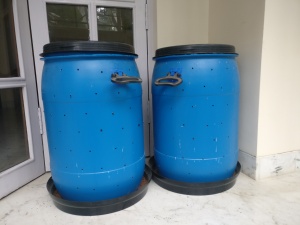
 This was our first harvest of black gold, the mature compost – its fragrance reminding us of the wet earth after the first rains. We sieved it, because we then
This was our first harvest of black gold, the mature compost – its fragrance reminding us of the wet earth after the first rains. We sieved it, because we then began to gift our compost. My mum-in-law says that in her days, she would prepare sweets, or sambar powder, or a special dish to gift her loved ones. Times
began to gift our compost. My mum-in-law says that in her days, she would prepare sweets, or sambar powder, or a special dish to gift her loved ones. Times

